
Game: Densha de GO! Pocket Yamanote-sen Hen
Developer: Taito
Publisher: Taito
Release Date: September 29, 2005
Genre: Simulation
System: PSP
My Score: 7.5/10
I am sure many of you have heard of the Densha de Go (meaning "Let's go by train" in Japanglish) series, and I have even sold Densha de Go controllers to some of you. Densha de Go started off as a arcade train simulator which was more on the arcade side (because it was originally released in arcades) and less on the simulation part. As time went on, the series became more technical and alienated a lot of fans. The fan base went from casual gamers to train enthusiasts. I am no train enthusiast, but I do have a small place in my heart for the public transportation system in Japan. Yeah, I know, pathetic. There were two PSP releases of Densha de Go which were released at the same time. The Yamanote version and the Tokaido version. Christmas of 2005, a friend of mine gave me a copy of the Yamanote version because she knew I was particularly fond of the Yamanote line since I lived near the Gotanda station at the time.
While the Densha de Go series covers a wide variety of train lines all over Japan, this review is for Japan Railways' (JR) Yamanote line in Tokyo. This game is just the Yamanote section of the PS2 masterpiece, Densha de Go FINAL. With 3.5 million riders per DAY, the Yamanote line is the most widely-used line in Japan since 1885. It is a 29-station loop line in central Tokyo. You can sit in this train from dusk til dawn and just go in circles. Each station also has a unique melody that plays before the doors close. They sell CDs of these very melodies in Japan. They also have keychains that play these melodies, and I am guilty of owning a few of them. I was also almost tempted to get the alarm clock whose buzzers are Yamanote melodies. Yes, again, pathetic, I know. Anyway, let's get to the game.
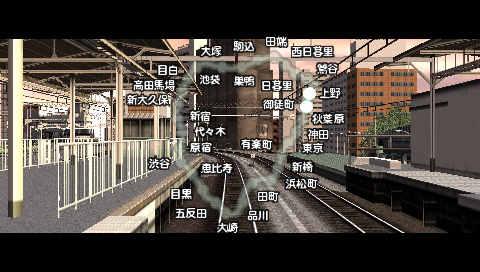
There are two portions of the game. Driver and Conductor. In both parts of the game you are given "hit points" or a "health bar". When this bar fully depletes, the game is over. The "health bar" sections are in the shape of human silhouettes which are supposed to be passengers. The passengers determine whether or not you are worthy of piloting a JR EAST train, which is one of the most coveted jobs in transportation.
In the driver portion of the game, you guessed it, you are the driver of the train. While getting the train rolling is pretty easy, keeping the train under the speed limit on hilly areas can be tricky, especially since checkpoints are closer together in these areas. If you pass a checkpoint going too fast or too slow, points will be dedutcted. The real challenge of the driver portion is stopping the nose of the train within the 1 meter area at the end of the platform so that all doors are lined up with the markings on the platform. As you go further in the game, this area becomes smaller. If you go beyond the limit, hit points are deducted. If you stop too early, then inch your way up to the line, more points are deducted. If you brake too suddenly, there is an animation of the passengers falling over and you guessed it, points will be deducted if this happens. Sometimes I'll do this purposefully for gits and shiggles.
You are given objectives, which may not seem to have a point at first, but after you spend time with the game, you realize that it is to hone different skill sets needed to master the game. For example, you'll be asked to pilot the train from Osaki station to Ueno station during morning rush hour on a sunny day. This stretch of track is fairly flat with limited hills and sharp turns. As you progress in the game, the weather and time of day changes. Not only that, but the passenger loads change. So the more empty the train is, the lighter it is, the more easier it is to stop within the limit. The most difficult would be a full load on a rainy day as the tracks are slippery and the train is heavier. The western span of the line is more hilly and has more turns which require you to concentrate of regulating the speed of the train. Each time you depart a station, you are told by a percentage how full the train is. After arriving at each station the game gives you a total of your hits and misses as well as calculates points earned for being on time, having no misses, etc.
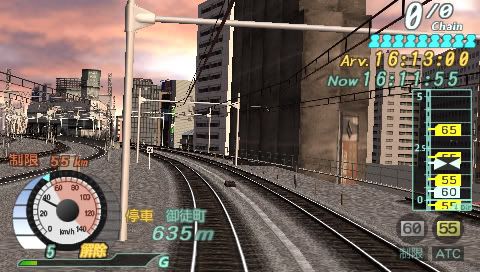
In the conductor portion of the game you are the guy in the "caboose" Your job is to announce the next station and to open and close the doors within a window of time. Open the doors too early or too late, points will be deducted. Points are also deducted for announcing the wrong station. Each time you depart a station, there is a list of stations (written in kanji) and you have to select the right station within 5 seconds. Either you memorize all 29 stations in order, or you can just cheat and have a list in front of you. The conductor portion of the game is pretty boring as there is nothing to do other than announce the next train and open and close the doors. In between the stations you have to wait the actual time it gets from one station to the next. So for 1 to 3 minutes, you are just watching the train go with absolutely no control over it whatsoever. Finish the conductor portion (which is very short) just to get the final unlocks of the game.
Each time you finish an objective, you unlock treasures of the game. You can unlock previous model trains, real-life videos of the Yamanote Line in action, as call signs for ad-hoc play. Yes, the game does have an ad hoc feature. You can be the driver and your friend can be the conductor. You can even design a custom business card to swap with other gamers who share your love of trains and train games.
There will be a 30th station added to the Yamanote Line within the next few years and it would be cool of there was some sort of DLC to add that station, but since the game was released before the PSN existed, any chance of DLC is highly unlikely. Bummer.
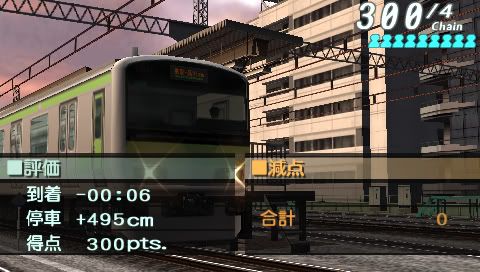
The verdict: 7.5/10
Accuracy of sounds (especially announcers and the infamous JR melodies), station platform layouts, and atmosphere earn this game points, as well as a great challenge on higher levels. The monotony and pop-up graphics earn the game negative points. The game is really designed for train otakus, so for someone with no interest in Japanese trains will find this game boring, extremely boring. For those of you who have an interest in Japanese trains or have great memories of a summer spent in Tokyo, this game may be great for you. The game is rare, even in Japan, so expect to pay upwards of 60 dollars for a used copy in Japan, but probably cheaper on ebay since they are not sought-after by westerners.
My copy, no emulation or pirated stuff;
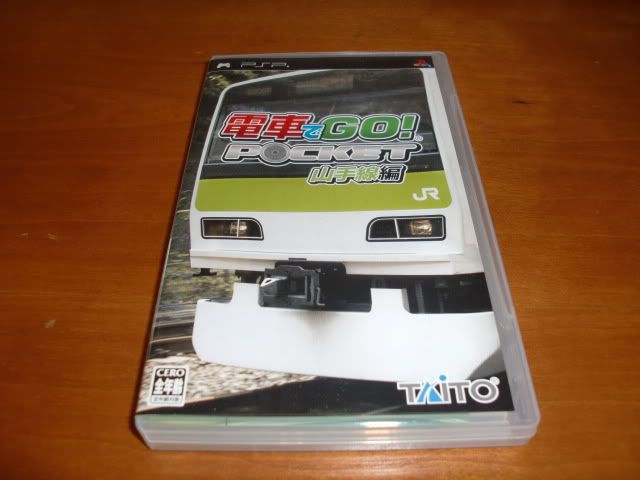
The actual train:

The fore mentioned alarm clock!
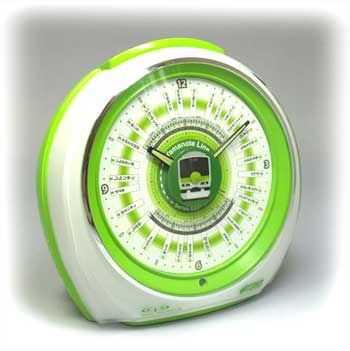

No comments:
Post a Comment